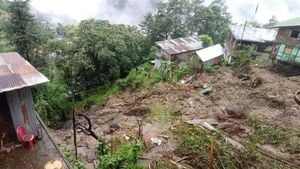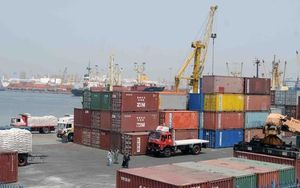Madrid is facing a critical situation as the Manzanares River rises dangerously due to heavy rains and snowmelt from the Sierra de Guadarrama. The ongoing storm, dubbed Martinho, has put the city on high alert for potential flooding, with emergency services determining that action is needed to safeguard the residents.
As of Thursday, March 20, 2025, the authorities closed crucial roads, including the M-30 and M-40, to mitigate risks related to the overflowing river. The Government Delegate in Madrid, Francisco Martín, emphasized the urgency of the situation, stating that the rainy conditions combined with increased water releases from nearby reservoirs create a precarious scenario that requires constant monitoring.
Emergencias Madrid has reinforced surveillance in particularly vulnerable areas, especially between Mingorrubio and the Puente de los Franceses, following substantial rainfall recorded in recent days. Residents have expressed deep concern, noting that they had not witnessed such high water flow in decades. One local remarked, "It’s a bit frightening after the recent flooding events in Valencia," highlighting how past weather disasters have heightened their anxieties.
The situation has escalated with rainfall surpassing historical records for March in the region. According to the Agencia Estatal de Meteorología (AEMET), the Retiro weather station gathered 182.9 liters of rain per square meter just this week, breaking the previous March record of 140.7 liters set in 2018.
As the intensity of the storm increases, meteorologists project that Thursday night and Friday will be particularly critical, with possible surges in river flow anticipated. Reports indicate that the A-6 highway is also at high risk, with water levels dangerously close to the road. Residents have been urged to stay informed and consider alternative means of transport during this tumultuous weather period.
Given the projected rainfall, some precautionary measures have included partial issuance of evacuation plans in flood-prone areas and the installation of containment barriers in vulnerable regions. The Transport Consortium has recommended prioritizing public transport to help ease the burden on the roadways affected by closures and traffic jams.
The Cecopi and the ASEM 112 (Emergency Services Agency of Madrid) are coordinating efforts to devise actionable plans in light of the evolving weather conditions. The emergency teams are composed of government officials, traffic personnel, and hydrological engineers from the Confederación Hidrográfica del Tajo, who have maintained communication regarding water management protocols.
As the rains persist and the snow continues to melt, experts have cautioned that the combined effects could lead to unprecedented levels of overflow in the Manzanares River, raising fears of significant flooding. Francisco Martín urged residents to practice maximum caution as they navigate areas near the unchannelled sections of the river.
Moving forward into the weekend, predictions indicate a decrease in temperatures, which could potentially slow the melting of snow. But further rainfall could pose even greater risks as the saturated soil struggles to absorb more water. On the ground, police drones patrol the riverbank, monitoring the situation closely as officials scramble to maintain safety and order.
Weather advisories suggest that on Friday, March 21, the alerts change, anticipating persistent rainfall paired with the risk of flooding leading to heightened alerts in the morning. As communities brace for the ongoing storm, officials continue to stress the importance of listening to local news and adhering to emergency directives.
Saturday will bring intermittent rain and a gradual thaw, leading to further monitoring by emergency services. Residents are encouraged to remain vigilant, preparing for any necessary responses to protect themselves and their homes from the river’s swelling currents. The city of Madrid stands united in facing this trial, hoping for a swift resolution to the climatological challenges ahead.






